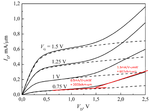Macduff
Newbie level 2

Hi all,
Firstly, I'm a foundry process engineer, with very limited knowledge about circuit design. My question could be silly. Please kindly give me indications easier to understand.
I'm told that good process variation control can save chip size, but I don't really know the reason. I guess it could be associated with timing. For instance, tighter SPICE corners can shorten necessary setup time or hold time, then designers can use smaller width devices or less delay cells. Is my guess close to the answer?
Thanks!
Firstly, I'm a foundry process engineer, with very limited knowledge about circuit design. My question could be silly. Please kindly give me indications easier to understand.
I'm told that good process variation control can save chip size, but I don't really know the reason. I guess it could be associated with timing. For instance, tighter SPICE corners can shorten necessary setup time or hold time, then designers can use smaller width devices or less delay cells. Is my guess close to the answer?
Thanks!


